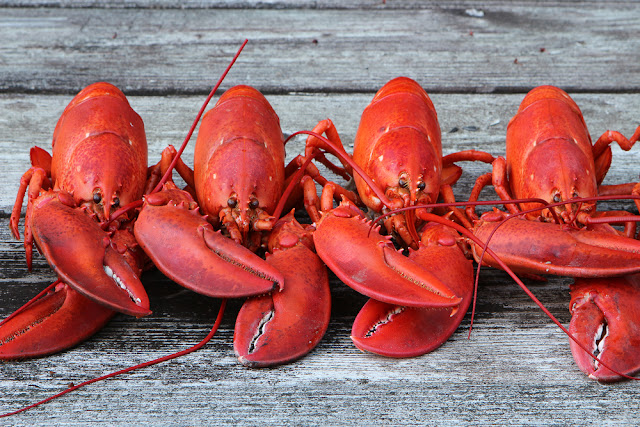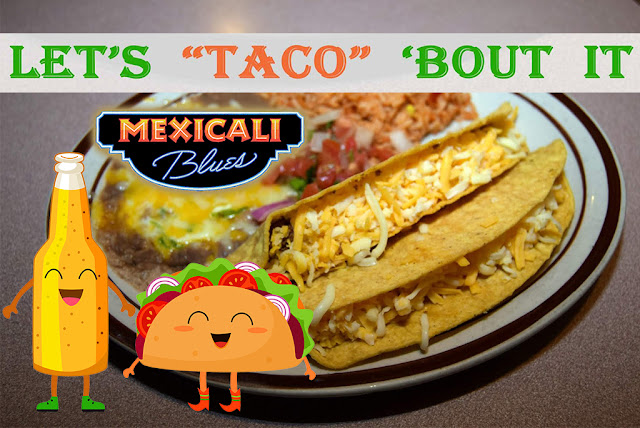Fun Facts About Lobster For Lobster Day!
June 15 is National Lobster Day and there is no better way to celebrate than with some of our famous lobster tacos! Two fried lobster tacos with lettuce, cheese, cilantro and ranch dressing served with rice. Are you hungry yet? Because it's National Lobster Day, Lake of the Ozarks' best Mexican restaurant wanted to learn a little bit more about this delicacy, so here are 9 facts you may not have known about lobster.
1. The American or Maine lobster is found in the Atlantic Ocean and has large, meat claws. Spiny lobster species, such s the California spiny have large, spiny antennae, but no large claws.
2. A lobster's nervous system is very similar to that of grasshoppers and ants, so they are often referred to as bugs.
3. The lobster's largest claw is called the crusher claw and it can exert pressure of up to 100 pounds per square inch. This claw looks like it has molars because it's used to break up anything hard like crabs, clams, mussels. The other smaller claw is called the ripper claw or the quick claw, and it tears softer food like fish or worms.
4. Some lobsters can live up to 100 years old, and researchers suggest they can keep growing their entire lives. However, scientists won't be able to tell how long lobsters really live because traps aren't designed to catch very large lobsters. A lobster is considered an adult when it reaches about 1.5 to 2 pounds. The largest lobster ever caught weighed an astonishing 44 pounds.
5. Lobsters aren't usually red before cooking. In the wild, most lobsters are a mottled greenish-brown. They turn red when cooking because the heat breaks the bond between pigmentation and protein in the shell. A small umber of lobsters can be red prior to being cooked, and they can even be other colors, such as orange, yellow, green, blue and various combinations of these colors. In some cases, these colors are a genetic mutation, and other times, it has to do with the food they eat.
6. In the 18th and early 19th century, lobsters were so abundant in New England that they were fed to pigs and the shells were used as fertilizer. Servants in Massachusetts were so sick of eating it that they won a court case to keep their masters from feeding them lobster more than three times a week. Advances in refrigeration allowed live lobsters to be transported all over the country. As demand increased, supply decreased, which drove up the price.
7. In an effort to make lobster shells worth something and keep the money in the lobster industry, a University of Maine professor created golf balls with a core made out of lobster shells. They're biodegradable so they can be used for golfing on cruise ships or courses near oceans and lakes. However, they only go about 70 percent of the distance of a regular golf ball.
8. Lobster meat is a great source of protein, as it provides 28 grams of protein per cup. If you skip the butter, they aren't fattening either. Three and a half ounces have just 96 calories and about two grams of fat.
9. If a lobster loses a claw or leg, it's no big deal, as they can grow another one. They can also drop a limb or claw if necessary in a defensive move to get away from a predator. This adaptive phenomenon is called autotomy or reflex amputation.
Come on into Mexicali Blues and celebrate National Lobster Day with our famous lobster tacos! We have a wide range of traditional Mexican favorites, as well as some items you can only find at the best Mexican restaurant at the Lake of the Ozarks. We look forward to seeing you soon!
1. The American or Maine lobster is found in the Atlantic Ocean and has large, meat claws. Spiny lobster species, such s the California spiny have large, spiny antennae, but no large claws.
2. A lobster's nervous system is very similar to that of grasshoppers and ants, so they are often referred to as bugs.
3. The lobster's largest claw is called the crusher claw and it can exert pressure of up to 100 pounds per square inch. This claw looks like it has molars because it's used to break up anything hard like crabs, clams, mussels. The other smaller claw is called the ripper claw or the quick claw, and it tears softer food like fish or worms.
4. Some lobsters can live up to 100 years old, and researchers suggest they can keep growing their entire lives. However, scientists won't be able to tell how long lobsters really live because traps aren't designed to catch very large lobsters. A lobster is considered an adult when it reaches about 1.5 to 2 pounds. The largest lobster ever caught weighed an astonishing 44 pounds.
5. Lobsters aren't usually red before cooking. In the wild, most lobsters are a mottled greenish-brown. They turn red when cooking because the heat breaks the bond between pigmentation and protein in the shell. A small umber of lobsters can be red prior to being cooked, and they can even be other colors, such as orange, yellow, green, blue and various combinations of these colors. In some cases, these colors are a genetic mutation, and other times, it has to do with the food they eat.
6. In the 18th and early 19th century, lobsters were so abundant in New England that they were fed to pigs and the shells were used as fertilizer. Servants in Massachusetts were so sick of eating it that they won a court case to keep their masters from feeding them lobster more than three times a week. Advances in refrigeration allowed live lobsters to be transported all over the country. As demand increased, supply decreased, which drove up the price.
7. In an effort to make lobster shells worth something and keep the money in the lobster industry, a University of Maine professor created golf balls with a core made out of lobster shells. They're biodegradable so they can be used for golfing on cruise ships or courses near oceans and lakes. However, they only go about 70 percent of the distance of a regular golf ball.
8. Lobster meat is a great source of protein, as it provides 28 grams of protein per cup. If you skip the butter, they aren't fattening either. Three and a half ounces have just 96 calories and about two grams of fat.
9. If a lobster loses a claw or leg, it's no big deal, as they can grow another one. They can also drop a limb or claw if necessary in a defensive move to get away from a predator. This adaptive phenomenon is called autotomy or reflex amputation.
Come on into Mexicali Blues and celebrate National Lobster Day with our famous lobster tacos! We have a wide range of traditional Mexican favorites, as well as some items you can only find at the best Mexican restaurant at the Lake of the Ozarks. We look forward to seeing you soon!
6605 HWY 54
Osage Beach, MO 65065
573-302-0419








Comments
Post a Comment